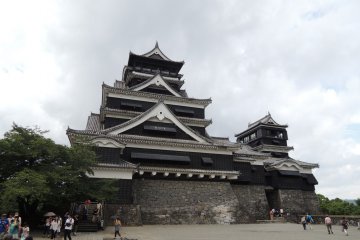
ปราสาทคุมะโมะโตะ
Eitetsu Terakadoปราสาทคุมะโมะโตะมีอายุสี่ร้อยปี สร้างโดยคะโตะ คิโยะมะสะ คุณสามารถชมวิวที่งดงามของเมีองคุมะโมะโตะและภูเขาในฉากหลัง

Kumamoto Castle is the third largest castle in Japan and one of its most popular historic sites. Originally built in the early 1600s by renowned castle architect Kato Kiyomasa, the fortification was burnt during the Seinan Civil War in 1877 and again sustained damage in the powerful earthquakes of 2016.
Kumamoto Castle sustained heavy damage during the 2016 earthquake. During the summer of 2021, the inner keep reopened after a 5-year reconstruction period. However, sitewide renovations are expected to continue until around 2038.
Though an earlier fortification had stood on the site since the mid-1400s, the foundations for the current incarnation of Kumamoto Castle were first laid in 1600 by local warlord Kato Kiyomasa. Having studied castle design during Toyotomi Hideyoshi’s Korea campaign, Kato constructed some of the most impressive defensive walls in the nation at his new fortress. The Kato family was replaced as lords of the region a mere half-century later and the castle came under the control of the Hosokawa clan. During the Satsuma Rebellion of 1877, samurai leader Saigo Takamori laid siege to the fortress. Despite his efforts, the inhabitants outlasted him, though the main keep mysteriously burned during the struggle. A new main tower was built in 1960, which houses a history museum and an observation deck on the top level.
Kumamoto Castle is one of the top spots for hanami, or cherry blossom viewing, in late March and early April. Around 800 sakura bloom around the Kumamoto Castle Park, drawing thousands of picnickers to enjoy the colorful spring scene.
Visitors to the city can learn a bit more about Kato’s castle building techniques, among other things, at the Wakuwaku-za, a cultural complex located in the Josaien complex at the base of the castle. An assortment of shops and restaurants make this a good stop for locally-themed souvenirs or lunch; local delicacies here include horsemeat croquettes, spicy lotus root tempura, and a vermicelli noodle dish known as taipien.
In April 2016, the Mashiki district of Kumamoto city was struck by two severe earthquakes. The disasters caused damage to several of the original watchtowers, and many of the rooftiles on the main keep were dislodged. The castle is currently closed to visitors while a 20-year renovation process is carried out. Specialists are attempting to use traditional methods and techniques to restore the castle, making it a vital project in understanding the castle construction of the feudal era. However, parts of the main keep and grounds will open for a limited time during the World Rugby Championships in October 2019.
Kumamoto Castle is the third largest castle in Japan and one its most popular historic sites. Originally built in the early 1600s by renowned castle architect Kato Kiyomasa

ปราสาทคุมะโมะโตะมีอายุสี่ร้อยปี สร้างโดยคะโตะ คิโยะมะสะ คุณสามารถชมวิวที่งดงามของเมีองคุมะโมะโตะและภูเขาในฉากหลัง
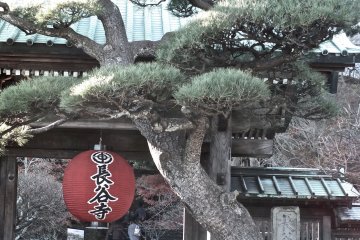
วัดฮะเซะเดะระแห่งคามาคุระในเดือนมกราคม ฤดูใบไม้ร่วงยังปรากฏตัวอยู่ แต่ฤดูใบไม้ผลิกำลังจะมาถึง
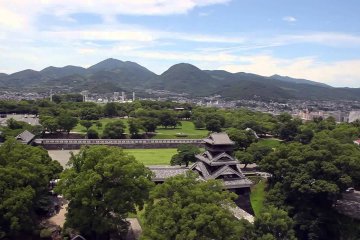
ปราสาทคุมะโมะโตะ (Kumamoto) เป็นปราสาที่ตั้งอยู่บนเนินเขา ในภูมิภาคคุมะโมะโตะ ถือว่าเป็นหนึ่งในสามปราสาทชั้นหนึ่งของประเทศญี่ปุ่น ภายในบริเวณปราสาทคุมะโมะโตะมีอาคารสิ่งก่อสร้างอยู่สิบสามอาคารที่มีความสำคัญทางวัฒนธรรม

ดอกซากุระที่ปราสาทคุมะโมะโตะบานกันเต็มที่ในวันสุดท้ายของเดือนมีนาคม

พวกเราน่ะโชคดีจริงๆ- วันนี้อากาศเยี่ยมไปเลย! ดังนั้นแทนที่เราจะใช้เวลาเดินสำรวจภายในพิพิธภัณฑ์ภายในตัวปราสาท พวกเราก็เลยใช้โอกาสเดินสำรวจรอบๆปราสาทแทน ทั้งทางเดินน่ารักๆด้านนอกและด้านในกำแพงซึ่งจริงๆแล้วสร้างความประทับใจได้ไม่แพ้ตัวปราสาทเองเลย พวกเราได้ภาพในมุมใหม่ๆมากมาย สร้างความลำบากใจไม่น้อยหากจะต้องให้เลือกว่าชอบมุมไหนที่สุด
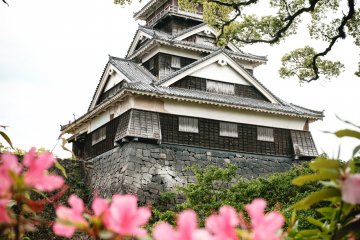
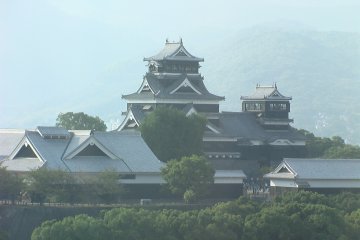
ห้อง Presidential Suite ที่โรงแรม Nikko Kumamoto มีวิวของปราสาท Kumamoto ที่ยอดเยี่ยมมาก

โรงแรมนิกโก้ คุมะโมะโตะให้บริการห้องพักที่หรูหรา สะดวกสบายในเมืองคุมะโมะโตะ

โรงแรมที่มีสิ่งอำนวยความสะดวกมากมายเพื่อตอบสนองความต้องการของทุกคน

HIGOMESHIYA YUMEAKARI (肥後めしや 夢あかり) ราเม็งเนื้อม้า ตำรับพิสดารเลื่องชื่อของคุมาโมโต้ที่ท้าให้ชิม

หลังจากเดินช้อปปิ้งบนย่าน กามิโตริ และชิโมโตริ ในเมืองกูมาโนโต้แล้ว ก็ถึงเวลาที่ท้องเริ่มร้อง ฉันมองเห็นร้านขายขนมมากมาย ทั้งร้านที่เป็นอาหารญี่ปุ่น หรือร้านอาหารอิตาลี บนย่านนี้คุณจะได้พบกับภัตตาคารโคอิโนชิซูกุ ที่เสริฟอาหารในแบบเกเซกิ และอาหารเย็นที่ปรุงจากส่วนประกอบท้องถิ่นดั้งเดิมของที่นี่ ด้วยราคาที่ไม่แพงเลยจริงๆ

ร้านซากุระมิจิเป็นร้านอาหารที่ให้บริการอาหารชุดแบบดั้งเดิมของญี่ปุ่นตั้งอยูตรงหัวมุมของโจไซเอ็น คอมเพล็กซ์ชั้นล่างของปราสาทคุมาโมโตะ
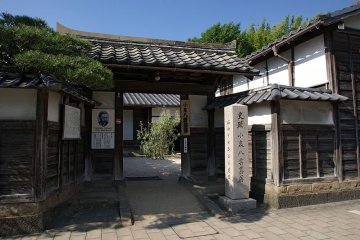
Lafcadio Hearn was born in Greece in 1850 to a father from Ireland and a mother from Greece. He was a British explorer who came to Japan in the 18th century and became a well-known author who introduced aspects of Japanese culture to the western world . In addition to his thirty other publications, Hearn was best known for his short story book "" Kwaidan "". His writings have been praised for their authentic views of Meiji-era Japan, unbiased from its Western origins. He lived in Matsue for about a year of his life and his former residence is now open to the public, along with a museum next door dedicated to his work and person.

Kumamon Square is the" "office" "of the famous mascot Kumamon of Kumamoto Prefecture. The bear mascot was created in 2011 to improve public relations in Kumamoto. Kumamon works as an official of the prefecture and is with the dual roles of sales manager and sales manager Happiness Manager for Kumamoto Prefecture. In Kumamon Square there is an exclusive souvenir shop, there are food stalls and an event stage. In the square, visitors have numerous opportunities to take photos and experience Kumamon up close. There are also live shows to which Kumamon dances. Kumamon Square is full of trophies the popular bear received from all over Japan.

Suizenji Jojuen is a traditional Japanese landscape garden that was laid out in the late 1600s. Due to its enormous size of 64 hectares, it is often referred to as Suizenji Park. Originally it was planned by Prince Hosokawa Tadatoshi to enjoy tea there in peace Its name comes from a former Buddhist temple there, while the garden now houses a Shinto shrine in which the Hosokawa family is buried. The garden is supposed to represent the 53 stations of the old Tokaido Street, a former trade route that ran between Tokyo and Kyoto. The highlight is the miniature representation of Mount Fuji, as well as a reduced form of the Fushimi Inari Shrine in Kyoto. The tea house there originally comes from the Imperial Palace in Kyoto and is open to the public. The Suizenji Jojuen is located in the city of Kumamoto on the southern main island of Kyushu and, along with the Kumamoto Castle, is one of the city's main attractions.